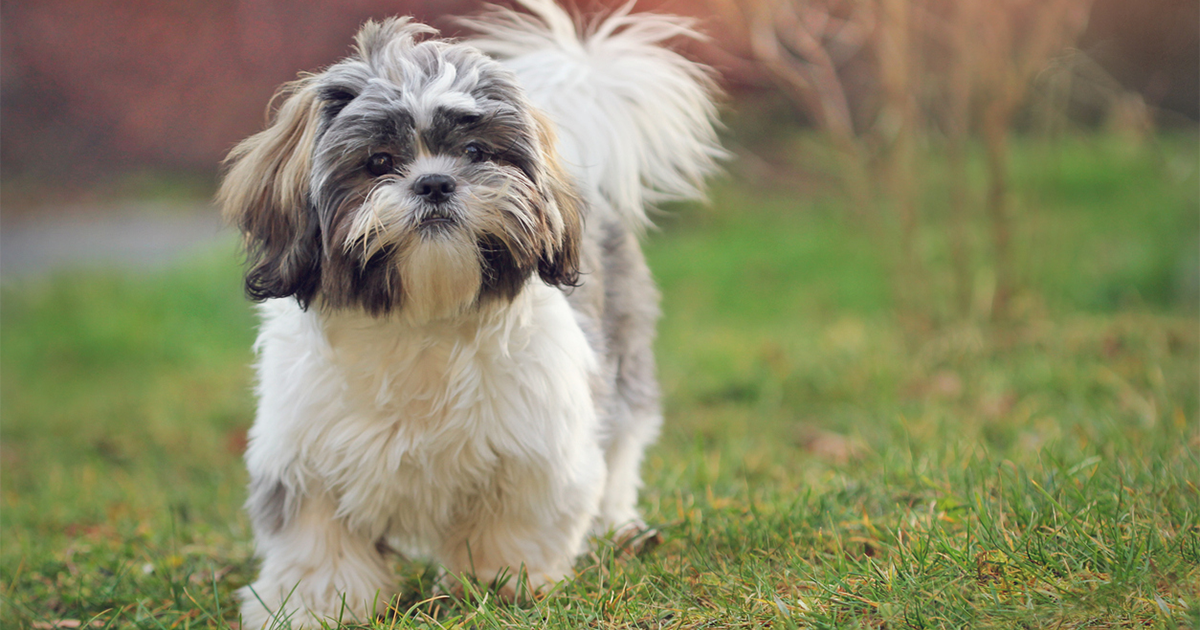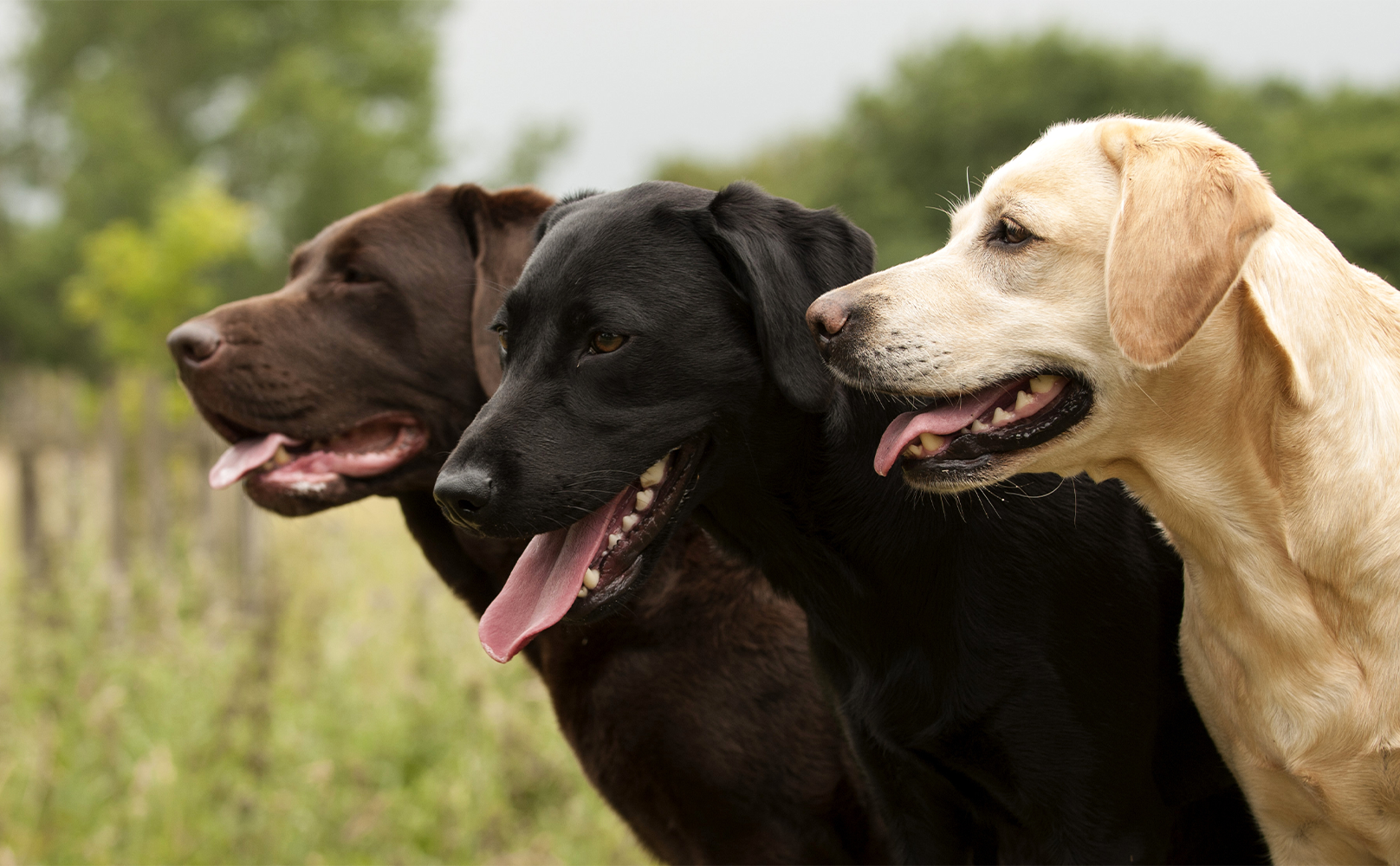Welcome to the BarkPost guide to dog breeds where we belly flop straight into the depths of dog breed origin, evolution, and purpose. Follow along each week as we publish new guides that highlight the strangest, most interesting, and most surprising stuff about these creatures who have been our best buds the last 30,000 years.
Intro/Overview
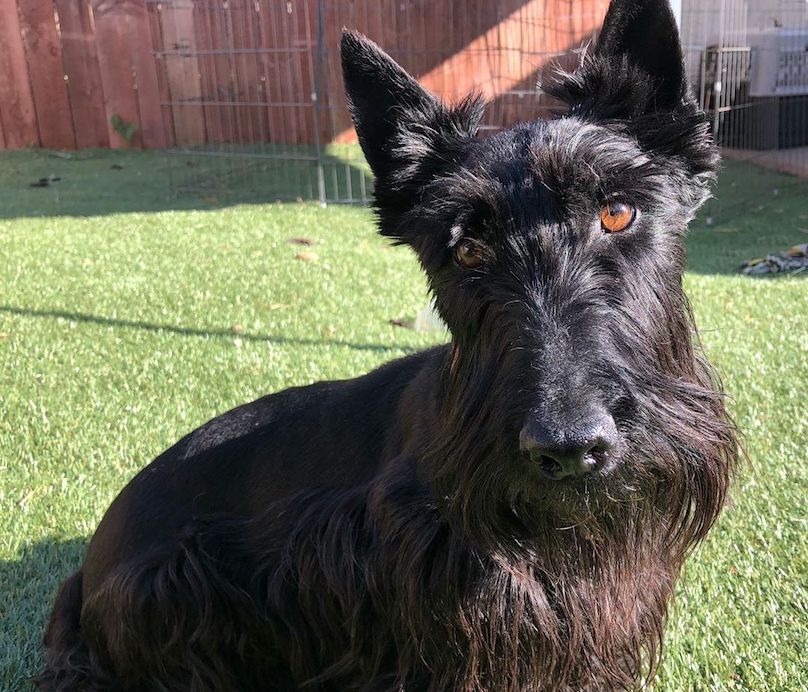

(All dogs are individuals, which means any single dog from any breed can be any number of ways, both good and not so good. Keep that in mind as we discuss breed generalities!)
The Scottish Terrier is a charming and exciting breed. Instantly recognizable, from the small stature with long hair to the beard and pointed ears, it’s easy to tell the Scottie apart from the other members of the Terrier group. These pups were a favorable companion to royals, movie stars, and even U.S. Presidents.
At first glance, Scottish Terriers may not seem like they have a ton going on. But they’re just as fun, vivacious, and captivating as many other breeds. Don’t let the serious facial features fool you, these pups are playful and quick and love to be at your side. They’re fearless, smart, and so much more. There’s a lot to learn about these small Highland pups, so let’s get to know the Scottish Terrier!
Also Known As…
Scottie. Diehard. Aberdeen Terrier. Aberdeenie. “Awww! It’s one of those adorable mustache dogs like from Lady and the Tramp!”
Origins
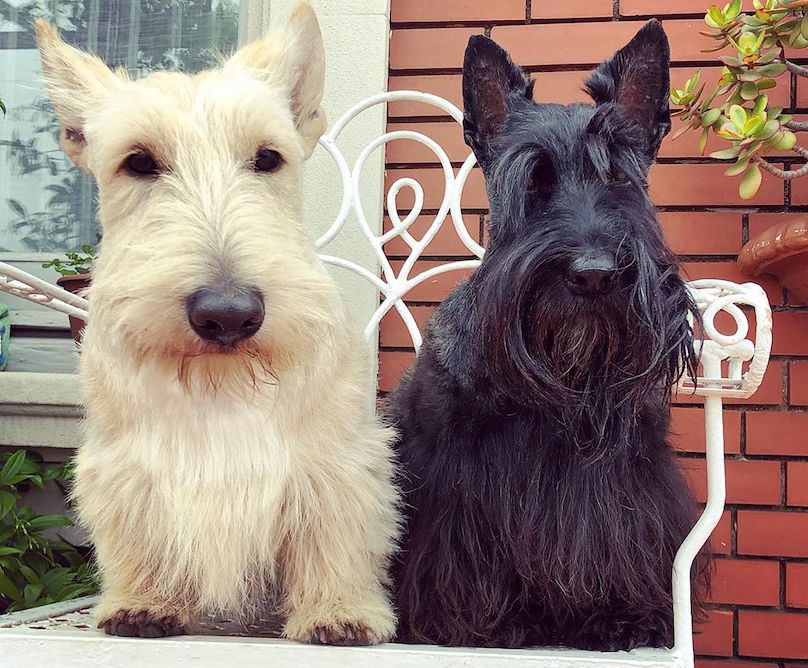

The Scottie is a distinct portion of the Terrier breeds. They originated in Scotland, bred for the purpose of vermin control. They were great at hunting, digging up, and killing rodents on farms in the Highlands.
There was a lot of confusion and controversy surrounding these pups in the 1800s. The discussion revolving around the Scottish Terriers was basically “What exactly made Scottish Terriers and how are they different from other Terriers that are Scottish?” Although many had their own opinions and beliefs about the philosophy of the Scotties, this breed eventually became recognized as a specific member of the Terrier family.
In England, the”Scottish Terrier Club of England” was founded in 1881, being the first club dedicated to the breed. The first Scottish Terriers came to America in 1883 as imports and the breed was established elsewhere overseas.
Over time the spirited breed became companions and best friends to famous stars – Humphrey Bogart, Bette Davis, and Tatum O’Neal – and lived at the White House with the United States Presidents Franklin D. Roosevelt and George W. Bush. And, yes, there’s a particularly famous Scottie in the Lady and the Tramp movie.
Size


The Scottish Terrier is a small breed with short legs. A full-grown adult Scottie, male or female, can grow to be between 10 to 11 inches tall.
Weight Range
These pint-sized pups have a sturdy frame and adults can weigh between 18 to 22 pounds for males and females.
Personality
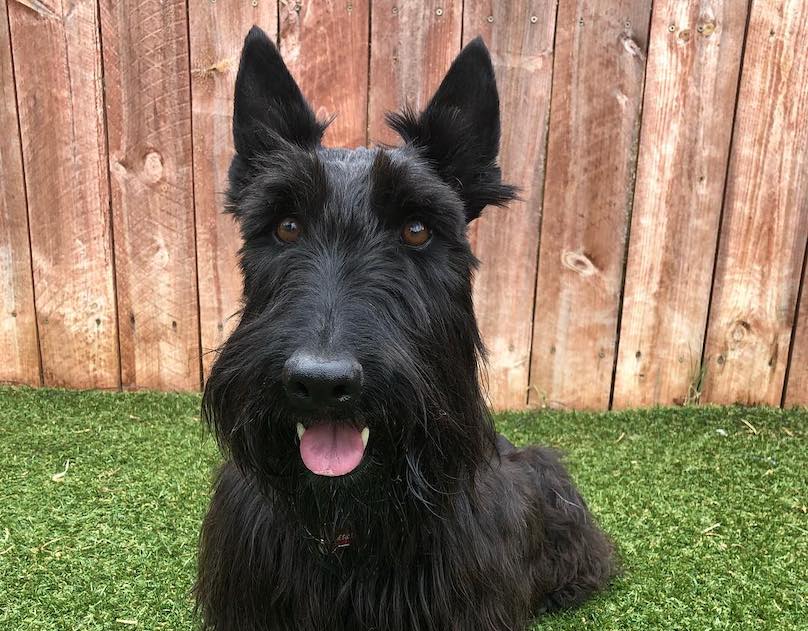

Scottish Terriers are famously known for being great companions. They tend to be independent, serious, and vocal in nature, but they’re also indifferent towards strangers. Preferring the company of their family members above all else, the Scotties would love to tag along with you every chance they get. Whether it’s sitting on the couch, playing in the yard, or going for a long walk, these pups want to be by your side.
Confrontational and fearless when challenged by other animals, mostly other dogs, the Scottie needs early training and socialization. Starting the training early and raising your pup to be familiar with other dogs will keep their aggression in check.
Scottish Terrier aren’t a very vocal breed, but they would make great watchdogs. If someone approaches your home, your Scottie will let you know! They’re always alerts, watchful, and quick. They’ll raise the alarm, if they believe it’s necessary, to let you know something.
It’s likely that you’ll find your Scottie digging to get at something in the yard or chasing small rodents and animals. They were primarily bred to hunt small game, and this instinct is still strong in the Scottie breed. Toys are a great way to help satisfy your pal’s desire to hunt, and they’re a positive way to direct their effort, energy, and time.
Intelligence/Trainability
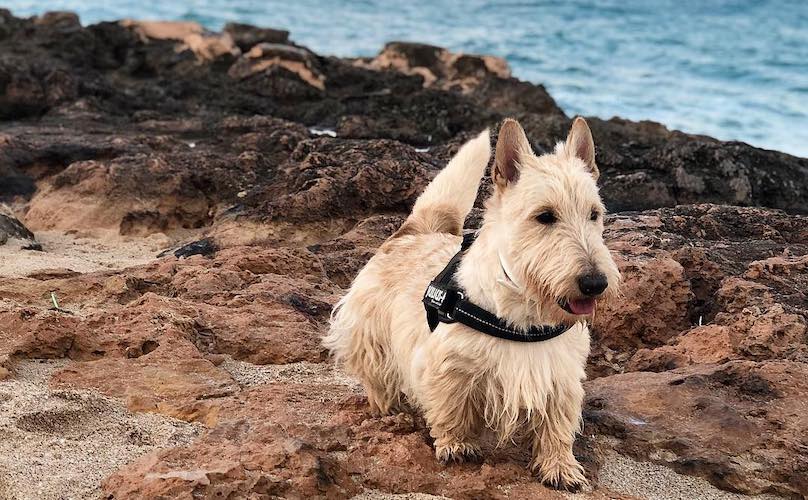

The Scottish Terrier is smart, alert, and energetic. True to the Terrier reputation, they’re also stubborn and have a short attention span. Teaching your pal commands or tricks may take a bit more time and patience. Training sessions should be short, about 15 minutes max, to ensure you have the pup’s full attention. Anymore time than that, the Scottie will lose focus and move on to something else.
Their independence and intelligence can make training more challenging. If they’re not mentally stimulated they can become bored. When bored, the Scottie will attempt to push boundaries with the owners or refuse to respond to commands or lessons.
Best Training Techniques for Scottish Terriers
- Start at an early age for the best results.
- Patience, and lots of it! Scotties are stubborn, so your pal may need more training sessions than other breeds.
- Make sure you’re training your pal where there are little to no distractions. You want them to focus only on you.
- Positive Reinforcement. Sensitive to negativity, these pups will thrive on positive verbal reinforcement for desired behavior.
- Treats are great motivators for a food-driven Scottish Terriers.
Ideal Enviroment
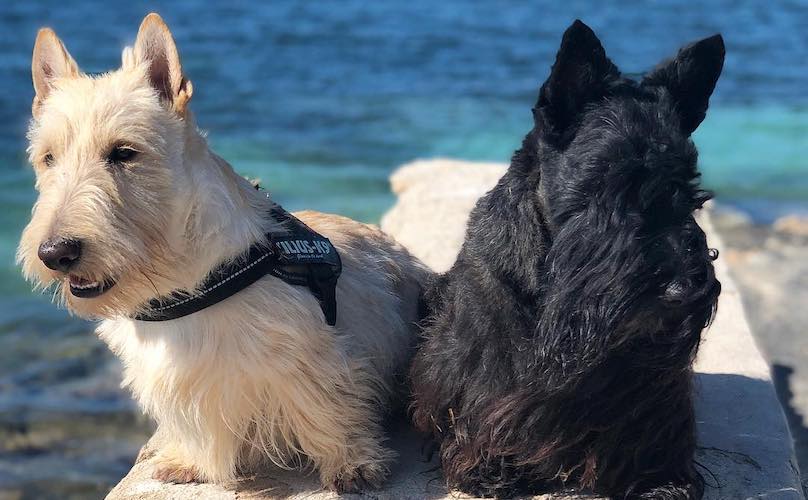

The Scottish Terrier is an easy breed to welcome into your home. Large families or solo dwellers will have a great time living with a Scottie. They’re easily adaptable and don’t take up much space. This breed would do well on farms with scrolling acres, or in large suburban homes, or in a studio apartment in the heart of the city.
Exercise is important in every dog’s life. Maintaining healthy weight and conditions should be top priority for owners. A fenced in backyard would make it easy for your Scottie to burn off some of that Terrier energy. If living in the city, moderate daily walks or trips to the dog park will suffice for your little one.
Good For Families And Kids?


Although Scotties can be a very independent, they’re loving and loyal to their humans. These pups would be a great addition to families -especially those with children.
As long as the pup is correctly socialized, they will be easily adaptable to any type of household. Teaching toddlers “good touches” and how to properly treat your dog will help them make fast friends. Scotties are small, spirited, and generally ready to play. They stay by your side and always have a toy nearby – which will keep your children entertained when playing inside!
Average Lifespan
The average lifespan of this classic breed is between 11 to 13 years.
Health
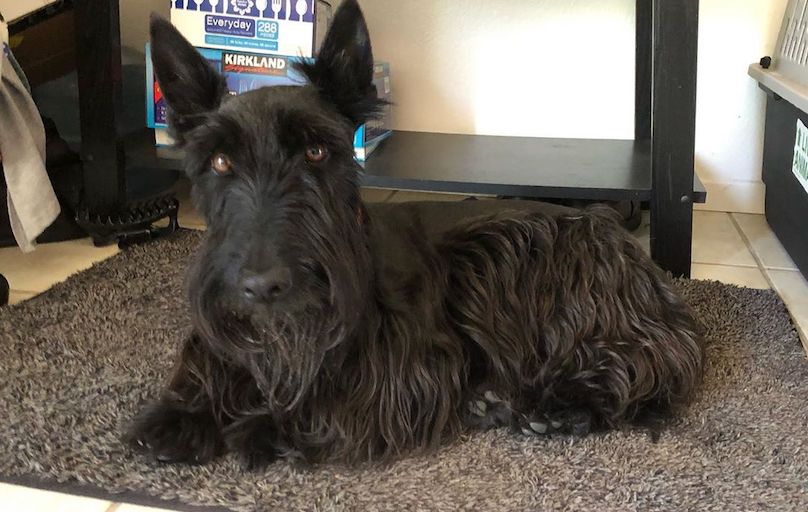

The Scotties are compact dogs that can withstand a lot of activity. All dogs experience wear and tear with time and age, and Scottish Terriers are no different. Here are the commonly known health issues associated with the breed.
- Scottie Cramp
- Von Willebrand’s Disease
- Craniomandibular Osteopathy
- Patellar Luxation
Energy
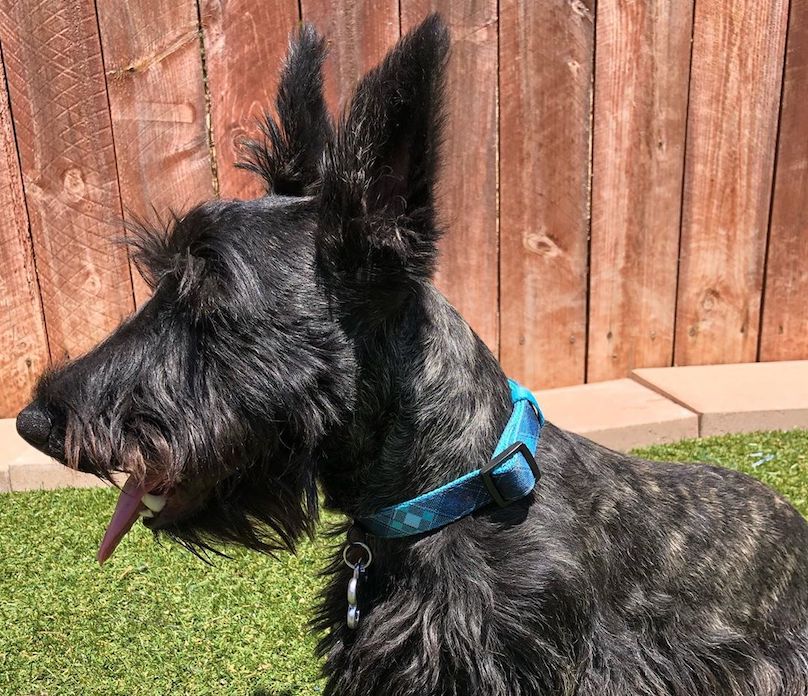

As members of the Terrier family, Scotties are high energy. They’re alert and very active. These pups are curious and generally playful, so make sure you have enough toys to keep them stimulated!
Scottish Terriers would be poor hiking companions due to their short legs and lack of physical stamina. A quick game of fetch or tug-of-war will help your fur friend burn off spurts of energy. With a Scottie’s short attention span, play sessions sprinkled throughout the day will be enough to keep your pal fit and entertained.
Friendly With… (Dogs? Strangers? Cats/Other Pets?)
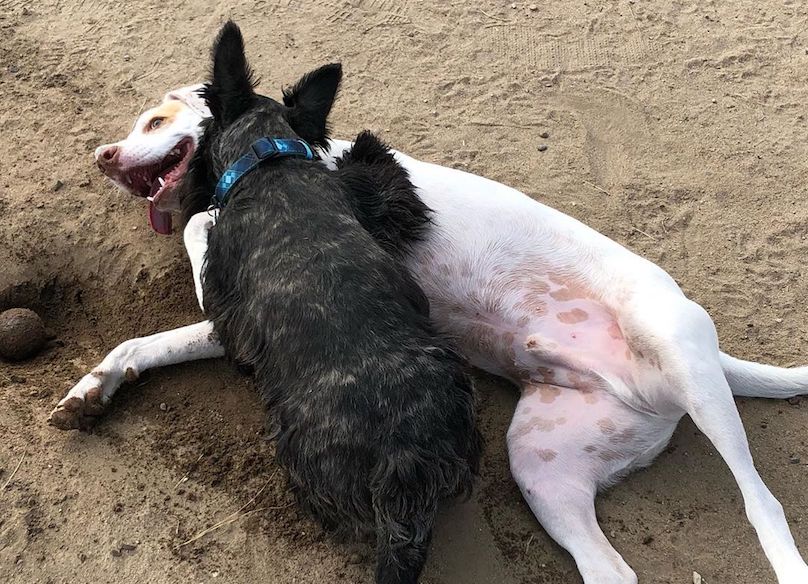

Scottish Terriers may have an easier time acclimating to living with cats and other pets, than with another dog. Aggression towards other dogs is a known trait for this breed. When socialized properly from a young age, Scotties will be great companions to humans, as well as other pets in the home.
Independent and territorial, Scotties sometimes like to think of themselves as guard dogs. They may work themselves up when strangers approach their home or meet them during a walk.. Once they get a sense of the stranger or come into contact with the new person, these pups can switch from alert to indifferent!
Coat & Grooming
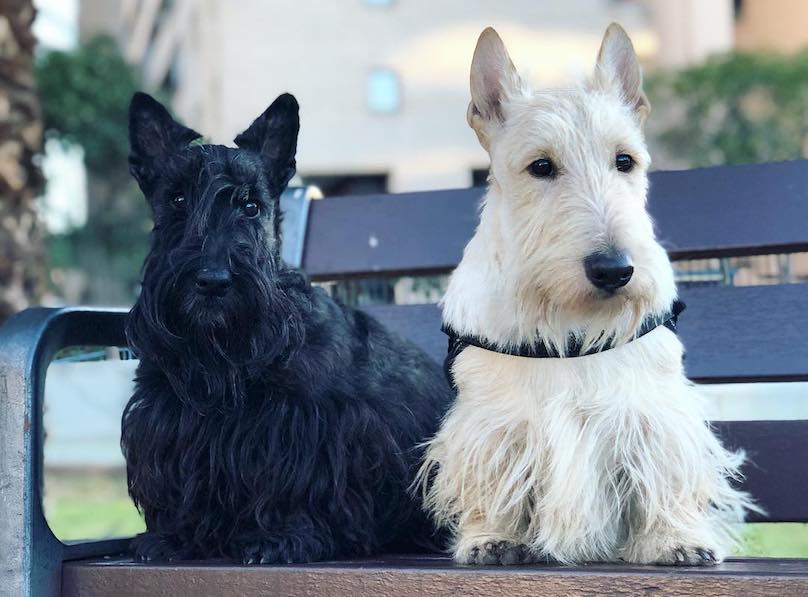

The classic Scottish Terrier silhouette is instantly recognizable. From the long wiry coat and beard to the erect pointed ears, this easily breed stands out from the rest.
The Scotties have a double coat that requires routine grooming. The coat is usually a rough and wiry outer coat on top of a dense softer undercoat. The Scottish Terrier comes in a small variety of colors. They can range from dark gray, deep black, brindle, and a combo of black and brown.
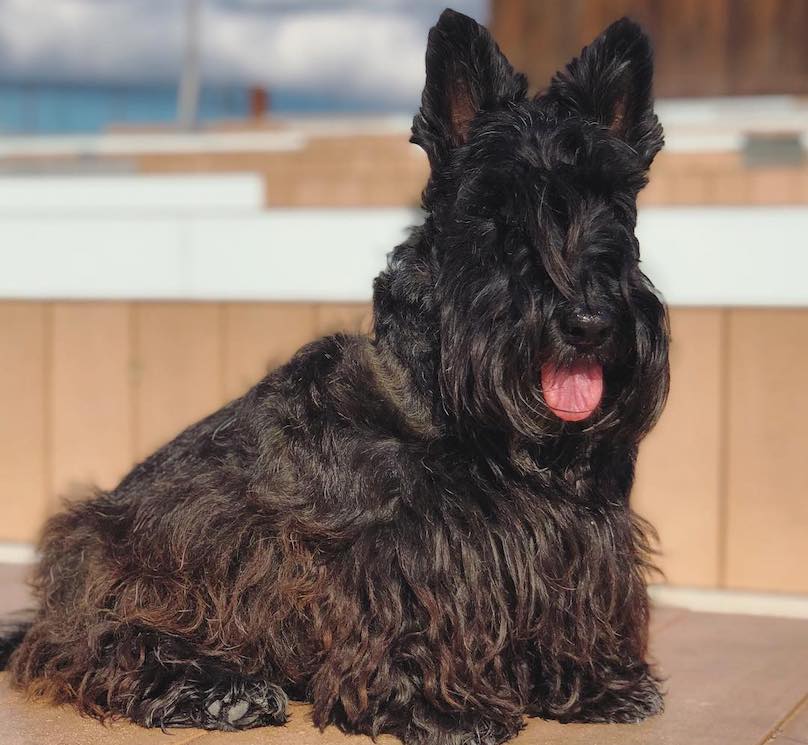

Compared to other breeds, the Scotties aren’t big on the shedding scale. The growing coat on such a small pup can make it easy for the fur to get dirty and knotted. Your pal can stay clean and tangle free with routine weekly passes of a pin brush that is able to reach the undercoat.
This distinguish breed requires a specific grooming technique in order to maintain the proper texture of their coat. To keep the Scottie’s famous shape and texture in the coat, owners and groomers will need to use Hand Stripping. “Hand stripping is a grooming method that involves plucking/pulling out the dog’s hair, always in the direction it grows.” explains Laura Reeves when sharing the basics of Hand Stripping on Show Dog Store. It would be best to start this technique when the dog is young, so they will become familiar with this grooming process.
Toys Scottish Terriers Would Like Best
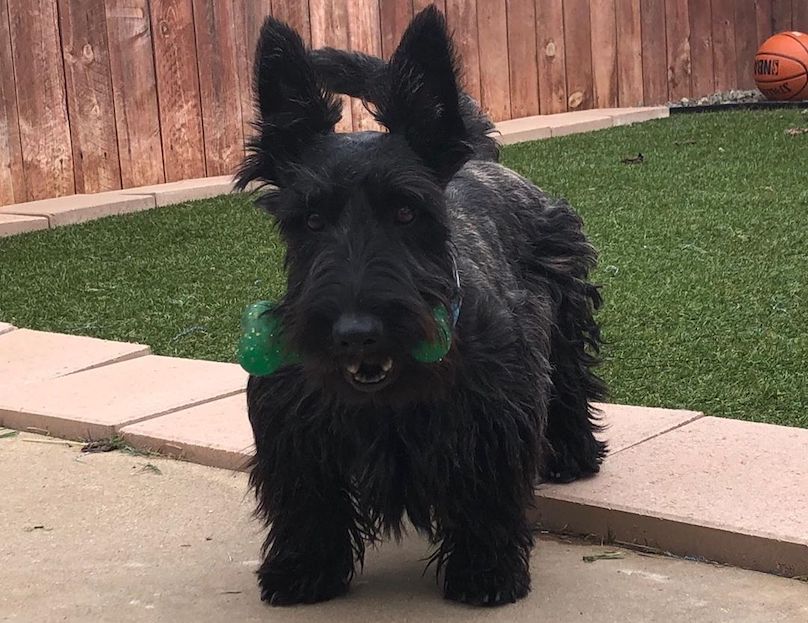

Scotties are small active pups who are always ready to play. It’s not always be easy to find a toy small enough to fit in a Scottie’s mouth, light enough to carry around, or squeaky enough to keep their attention. Small Plush Toys and Multi-Part toys are perfect option for your Diehard dog.
Check out 5 Toys That Terriers Can’t Resist for suggestions on how to get your pup playing!
Recommended Diet Or Supplements
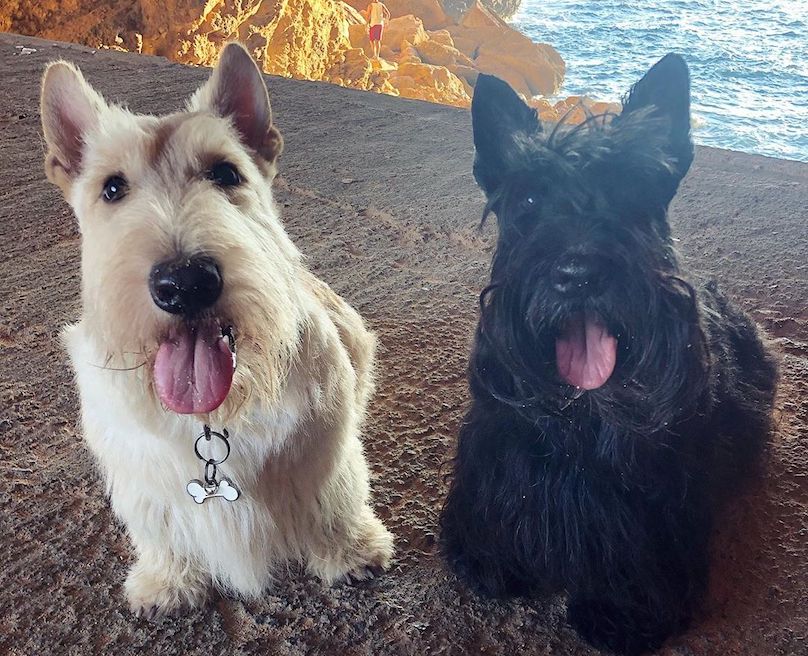

Make sure your Scottie stays in top condition with a steady diet of dog food made from high-quality ingredients. Because Terriers have gentle digestive systems, any deviation from this diet (for example, feeding pup table food too rich for their system) can result in disagreeable tummy issues.
There are also supplements you can give your pooch to help them function at their highest level. A supplement, made specifically to ease joint pain can be a great way to support mobility, especially as Scotties get older. As always, consult your vet before administering anything to your dog.
Glucosamine Supplement For Hip & Joints


This joint supplement is veterinarian-formulated, made with all natural ingredients (glucosamine, MSM, chondroitin, and hyaluronic acid), and comes in the form of 150 soft chews. Basically, it looks and tastes just like delicious treats, and it could really help your Scottie with their hip and joint issues. ($32.99.)
Full-Spectrum Hemp Oil
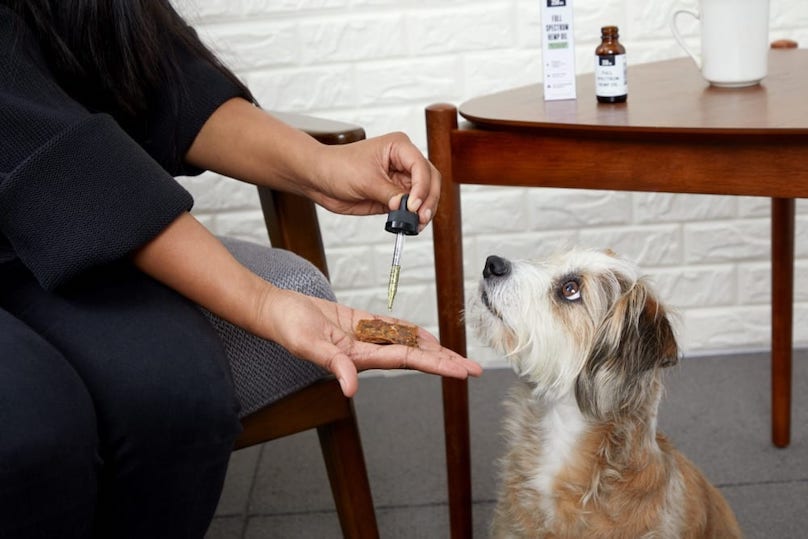

BARK’s Full Spectrum Hemp Oil is made of organically grown whole plants, grown in Colorado, and is non-psychoactive. It comes in 100mg, 250mg, and 500mg varieties, and can help with joint issues, pain relief, and ease aggression in dogs during stressful situations. ($17.99-22.99.)
Recommended Products
For older Scotties or dogs experiencing joint pain (or even dogs who just like to lie around), a nice comfortable dog bed is probably a good idea!
Orthopedic Ultra Plush Memory Foam Bed


This ultra plush orthopedic dog bed is great for supporting your pup’s stout body. A high quality combination of ergonomic memory foam and gel foam helps ease body aches, joint pain, hip dysplasia and arthritis. This bed offers the best therapeutic support for your Scottie. ($27.99-64.99.)
Notable Rescues to Find the Scottish Terriers of Your Dreams:
- St. Louis Scottish Terrier Rescue
- Scottish Kingdom Rescue, Inc
- Westie and Scottish Rescue Houston
- Tennessee Scottish Terrier Rescue Network
- Adoptable Scottish Terriers on Petfinder
Notable Instagram Scottish Terriers
Looking to get a daily dose of Diehards? Check out these totally adorable and charismatic Scotties from Instagram!
@being_a_scottie!
@Spencer_Wesker_Scotties!
@Scottiemiloh!
@artiscottie!
@finely.and.teddy!
@ascottienamed_ruby!
***Looking for a gift to blow your Scottish Terrier’s mind? Spoil them with BarkBox! Every month BarkBox delivers 2 original toys, designed in-house, 2 full bags of all-natural treats, and a chew. Sign up here and receive a free extra toy every month. <– This deal is worth up to $120 in value if you sign up for a 12-month subscription! 🙂
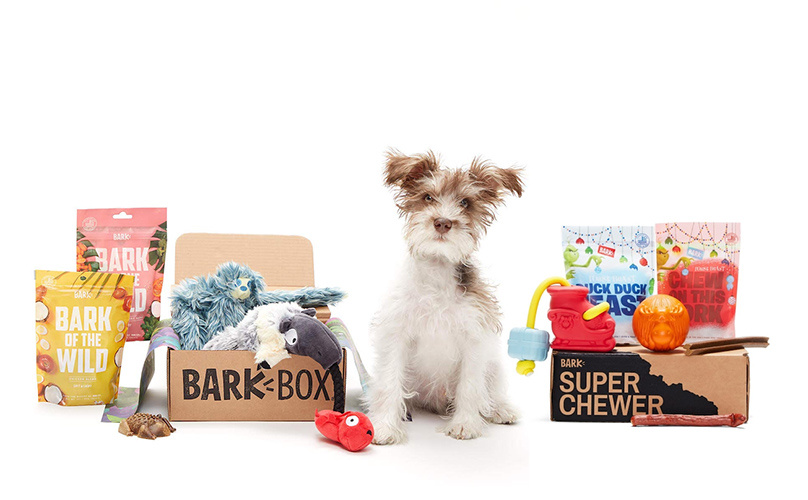

Featured image via Being_A_Scottie/Instagram
Want More Helpful Breed Guides Like This?
Yorkshire Terrier Breed Information Guide
Doberman Pinscher Breed Information Guide
Vizsla Breed Information Guide
Dalmatian Breed Information Guide
American Bulldog Breed Information Guide


